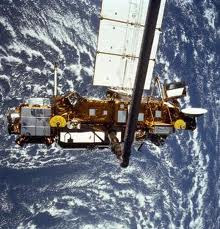
Mercury may have a lot in common with Earth, but close-up images and data captured by NASA'S MESSENGER probe this year show it's still a bit of a planetary weirdo.
Just like Earth, Mercury has lava flows. But these are deep flows that smoothly cover the small planet's northern polar region, with no Earth-type volcanoes in sight.
There are dips in Mercury's surface, just as there are hills and valleys on Earth, and both are rocky planets. But those on Mercury have been dubbed "hollows" to differentiate them from impact craters and other depressions on the small, hot orb closest to the Sun.
It has a magnetic field, just as Earth, Jupiter, Saturn, Uranus and Neptune do, but Mercury's magnetosphere is so small -- about 1 percent the size of Earth's -- that it offers little protection from the charged particles that make up the solar wind blasting off the Sun.
"Mercury is not the planet described in the textbooks," James Head III of Brown University said in a telephone briefing on Thursday. "The innermost planet has had a long and much more exciting life than anyone expected or predicted."
MESSENGER -- which stands for MErcury Surface, Space ENvironment, GEochemistry, and Ranging spacecraft -- looped around the inner solar system 15 times over six years before beginning its orbits around the planet on March 18.
Alligator boots
Diamond Studs
Read More

















